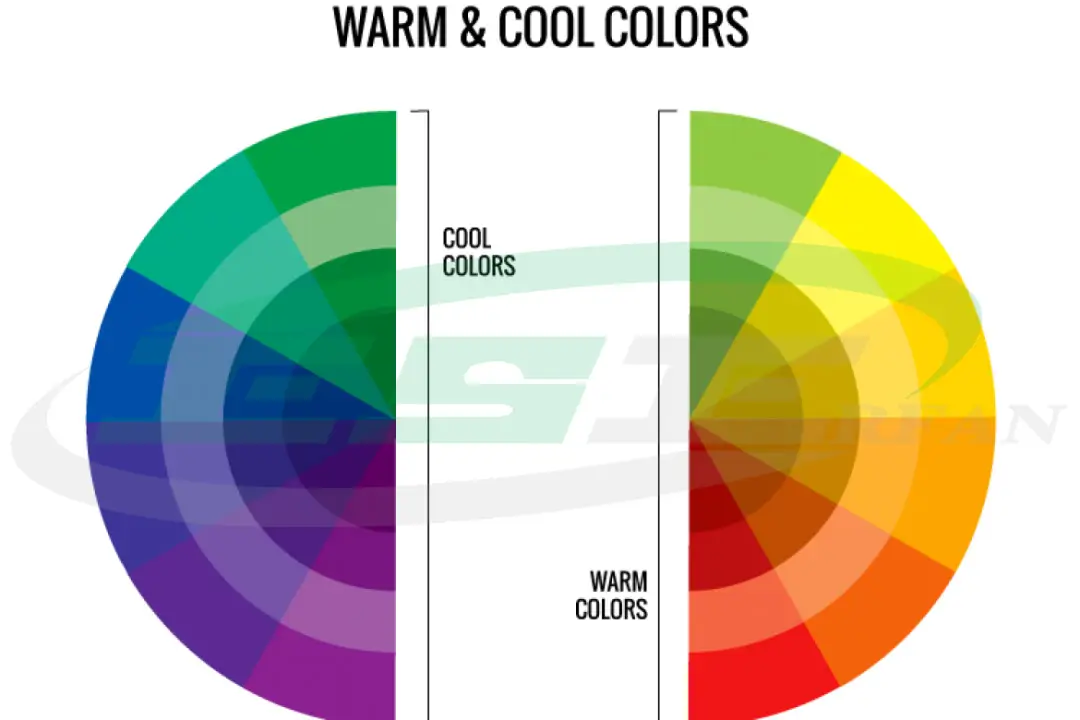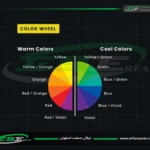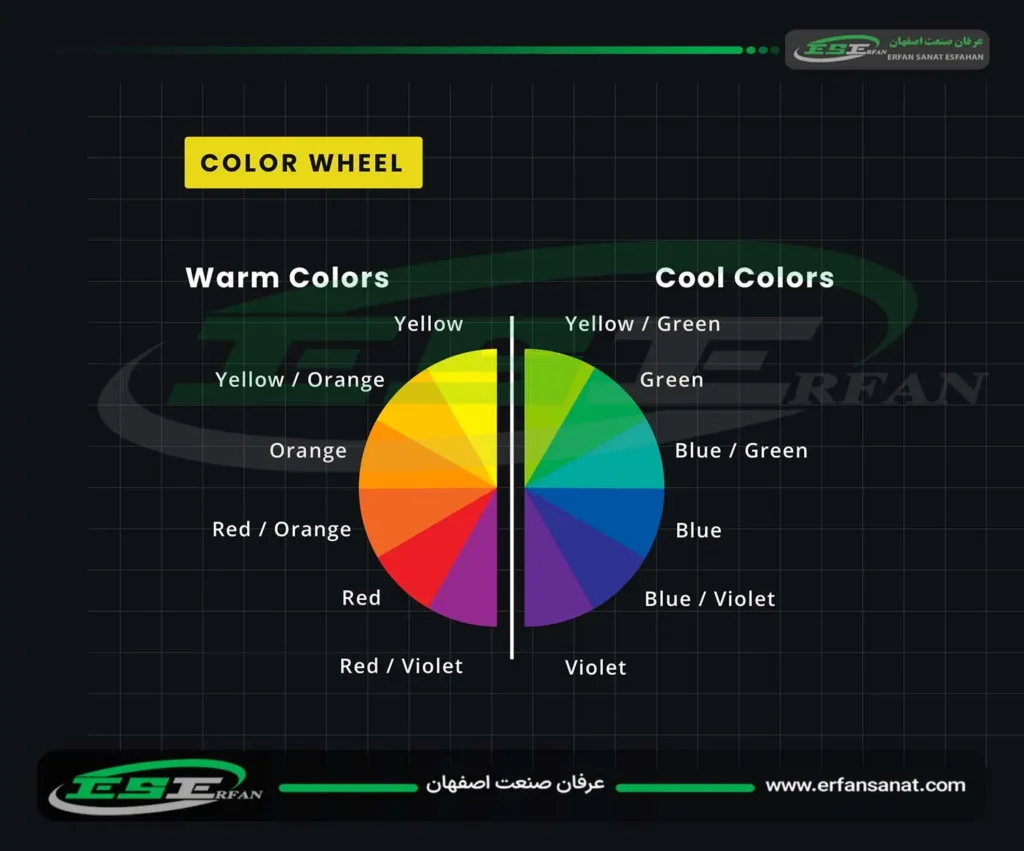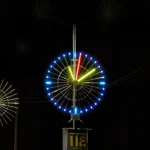In this article, we will discuss lighting concepts. Color temperature, color rendition percentage, luminous flux, luminous intensity, luminous efficacy, illuminance, reflection coefficient, and luminance are among the topics we will become familiar with in this section.
Color temperature is a number that indicates the brightness and color of external light and is measured in Kelvin degrees.
The higher this number, the closer the light color is to the cool and white color range, and the smaller this number, the closer the light color is to the warm color range, such as the light color emitted by incandescent lamps.
Generally, a color temperature above 4000 Kelvin is considered cool light, and a color temperature below 3000 Kelvin is considered warm light.
A black body is an element similar to platinum that reflects no light and absorbs all the light radiated upon it.
The color temperature of a light source is obtained by comparing it with the color of an ideal black body.
By heating a black body, light tending towards red colors is first emitted, and with increasing temperature, the color of the light approaches the orange, yellow, white, and then blue color ranges, and the higher the temperature, the whiter the body becomes.
Since the concept of color temperature may be unfamiliar to many users, terms compliant with standards have become common among lamp manufacturers to express color temperature, which are inscribed on the lamp. Sunny or warm white, neutral white or cool white, moonlight or daylight are among these terms, which are described below:
Terms Related to Color Temperature
Sunny or Warm White (WW): The light from these lamps, with a color temperature of less than 3300 Kelvin, creates a feeling of calm and warmth in the environment. The light color of these lamps is similar to incandescent lamps. These lamps are suitable for environments such as hotels, hospitals, bedrooms and living rooms of homes, kindergartens, and conference halls where individuals are meant to rest or feel relaxed.
Neutral White (NW): The light from these lamps, with a color temperature of 3300 to 5000 Kelvin, is a light color between sunny and moonlight. The light color of these lamps is similar to fluorescent lamps with neutral white light.
Moonlight or Daylight (DW): These lamps, producing light with a color temperature above 5000 Kelvin, are very suitable for illuminating places that require high brightness. The light color of these lamps is similar to moonlight fluorescent lamps.
These lamps are considered a suitable option for installation in stores, supermarkets, manufacturing industries, and factories.
Despite various lamps with different color temperatures, it is often wrongly seen in many cases that to achieve a medium light color in an environment, two lamps with sunny and moonlight color temperatures are placed side by side. However, this not only makes the environment unsightly but also leads to non-uniform light distribution and is not desirable from the perspective of modern lighting design.
It is clear that there is no need to do such a thing when the desired goal can be achieved by using lamps with a medium light color (such as cool white).
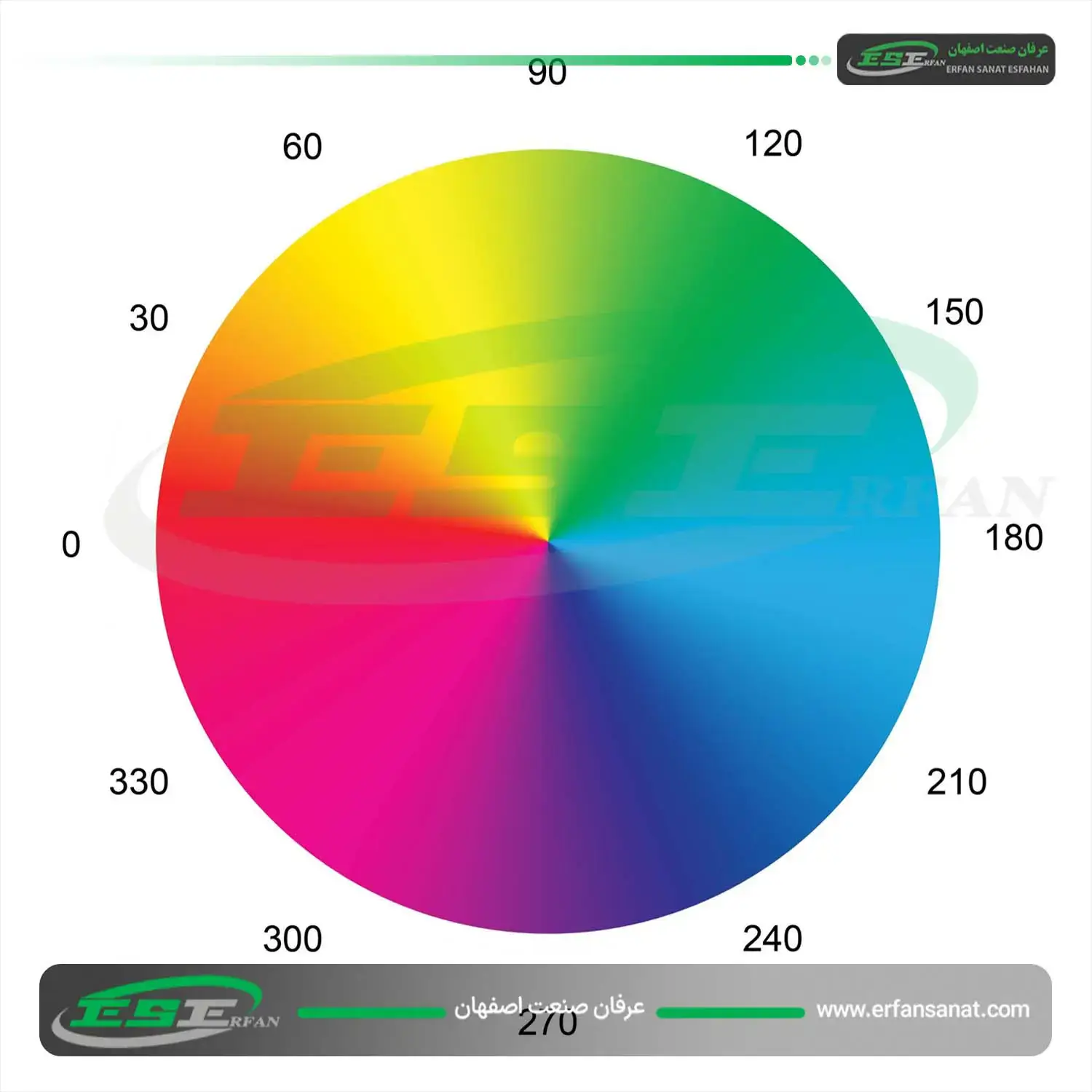
Color Rendering Index (CRI):
Since the sun is considered the main light source, the best and most natural viewing condition for humans is under sunlight. It should be noted that visually, the best light sources are those that have a light spectrum most similar to the natural light spectrum of the sun.
Based on the appearance of objects under sunlight, the Color Rendering Index or color rendition percentage indicates how accurately objects are displayed in their true color under the light emitted by a lamp.
CRI for lamps is a number between 20 and 100, and the higher this number, the more real the color rendering is.
The main factor for desirable color rendering by a lamp’s light is the completeness of its light spectrum. For example, when red color is not present in the light spectrum emitted by a lamp, all red-colored objects (containing red parts) will not be shown in their correct color.
Therefore, for places where the accurate display of color is very important, such as textile industries, paint rooms in automotive industries, makeup rooms, and so on, the use of lamps with a high color rendition percentage is recommended.
Color Rendering Index Classification
According to the standard, the Color Rendering Index is divided into 6 general groups as follows:
- 1A Excellent Color Rendering Index (90-100 percent)
- 1B Very Good Color Rendering Index (80-90 percent)
- 2A Good Color Rendering Index (70-80 percent)
- 2B Medium Color Rendering Index (60-70 percent)
- 3 Acceptable Color Rendering Index (40-60 percent)
- 4 Poor Color Rendering Index (20-40 percent)
The color rendition percentage in any environment is among the items specified by the standard.
For example, the color rendition percentage in a hospital environment must be in Group 1 (i.e., 1A or 1B). Consequently, the use of ordinary fluorescent lamps, which fall into Group 2A or 2B, is not correct for this purpose.
To express the color temperature and color rendition percentage of different lamps, in recent years, the International Association of Lighting Engineers has proposed a three-digit code (such as 827, 740, 930, etc.) for lamps.
Its first digit indicates the color rendering index according to the table below.
Color Rendering Index | First Digit
- 90-100% | 9
- 80-89% | 8
- 70-79% | 7
- 60-69% | 6
- 50-59% | 5
- 40-49% | 4
The second and third digits of this code represent the lamp’s color temperature in Kelvin units.
